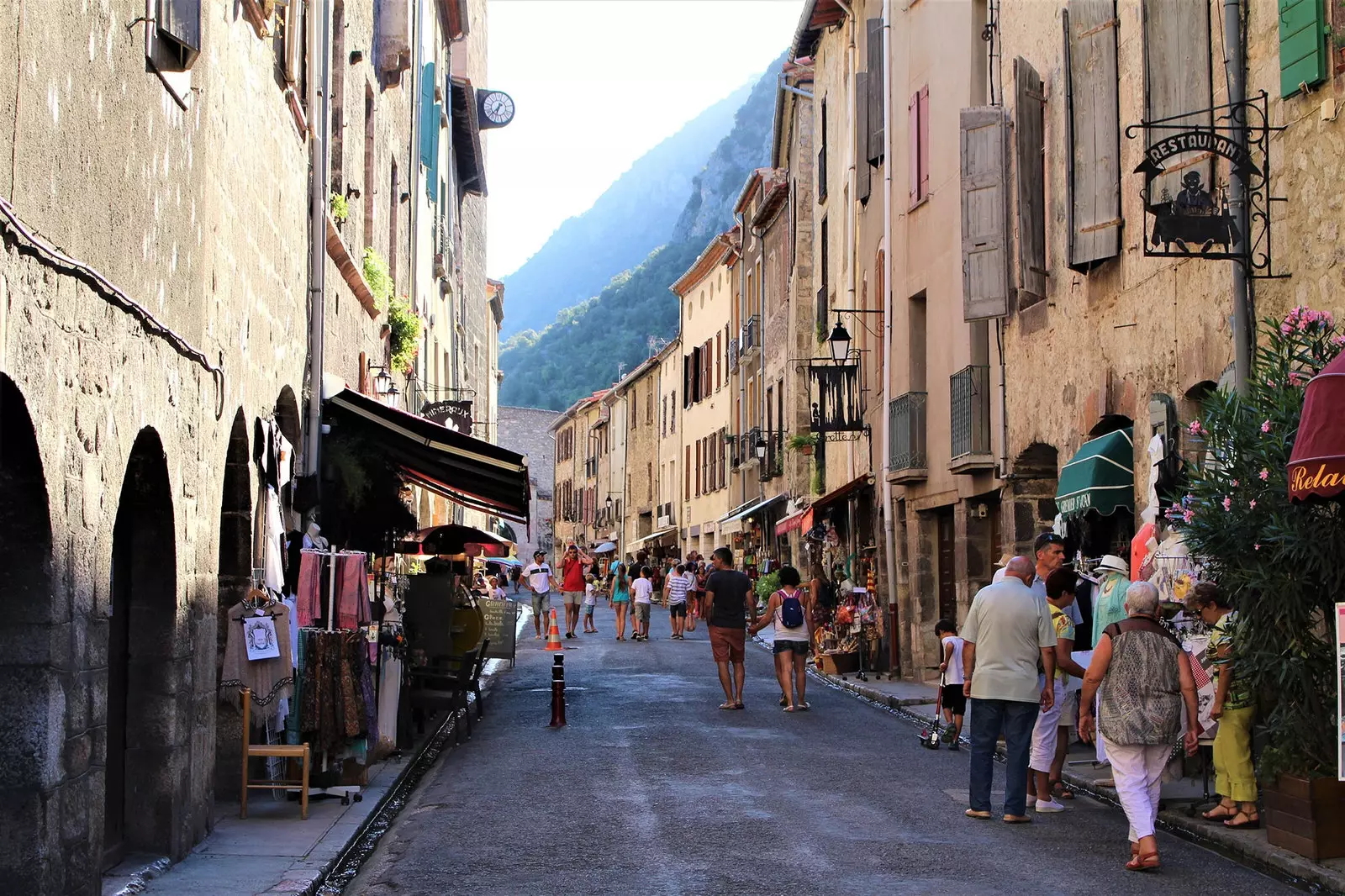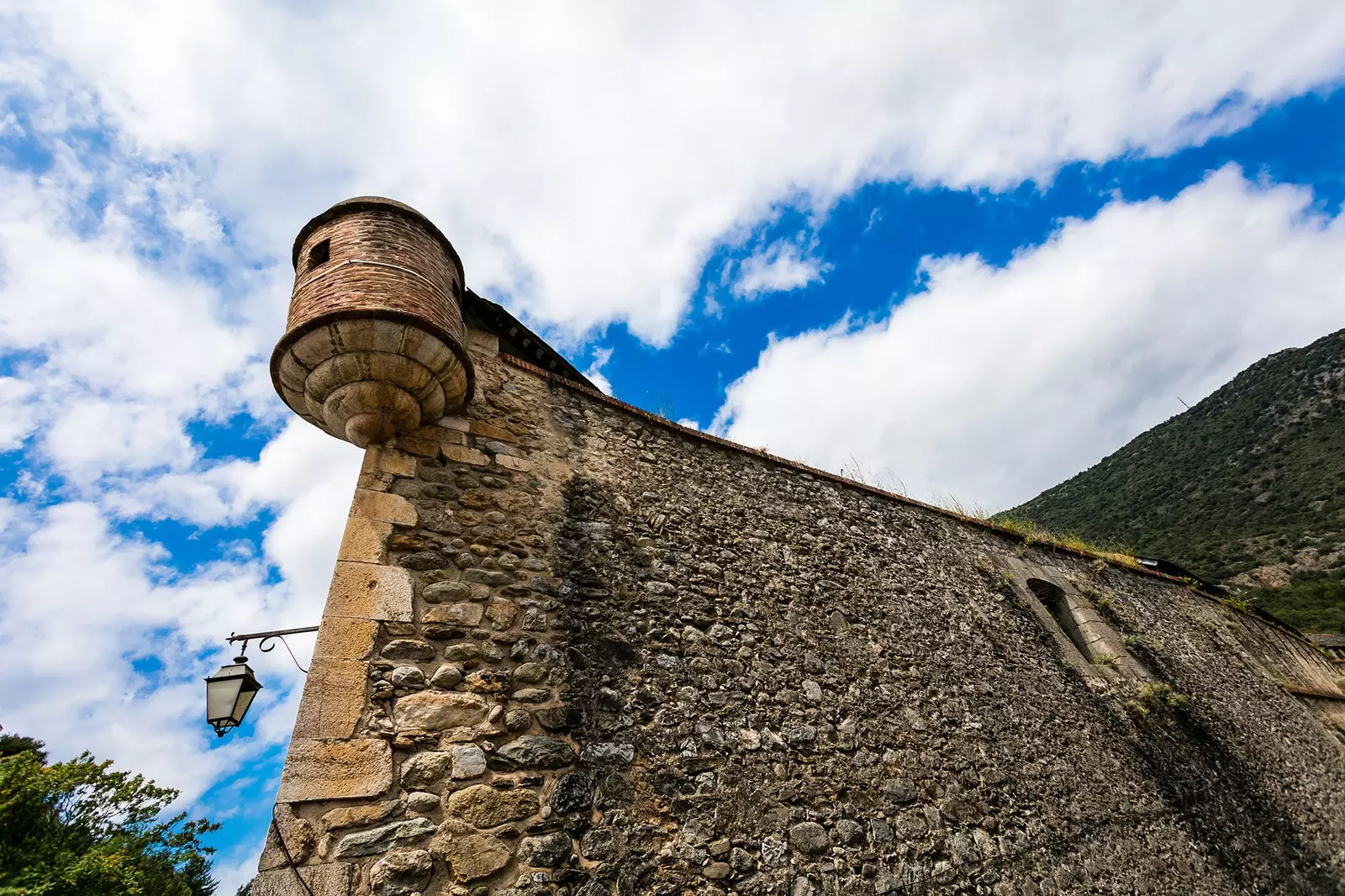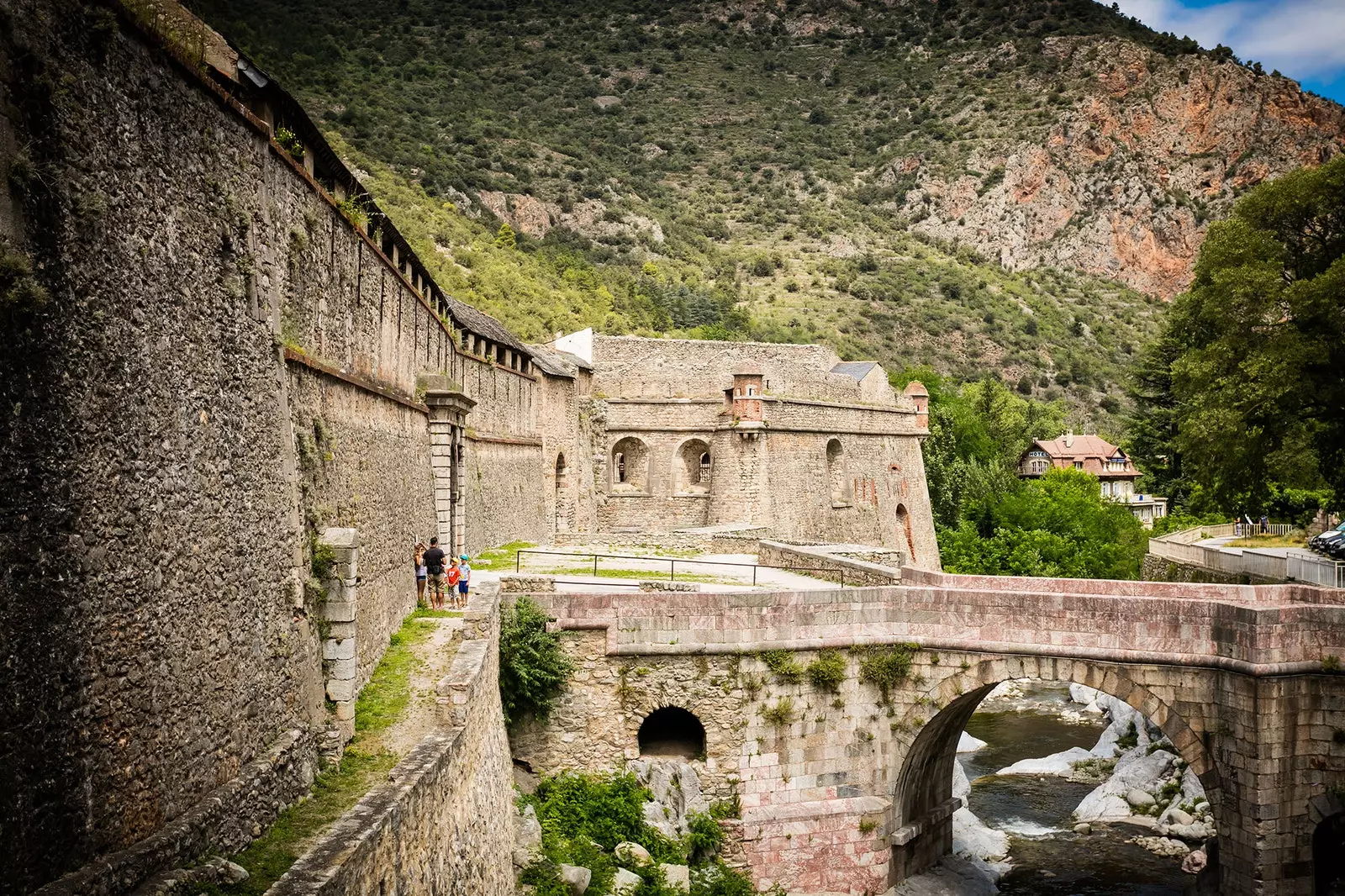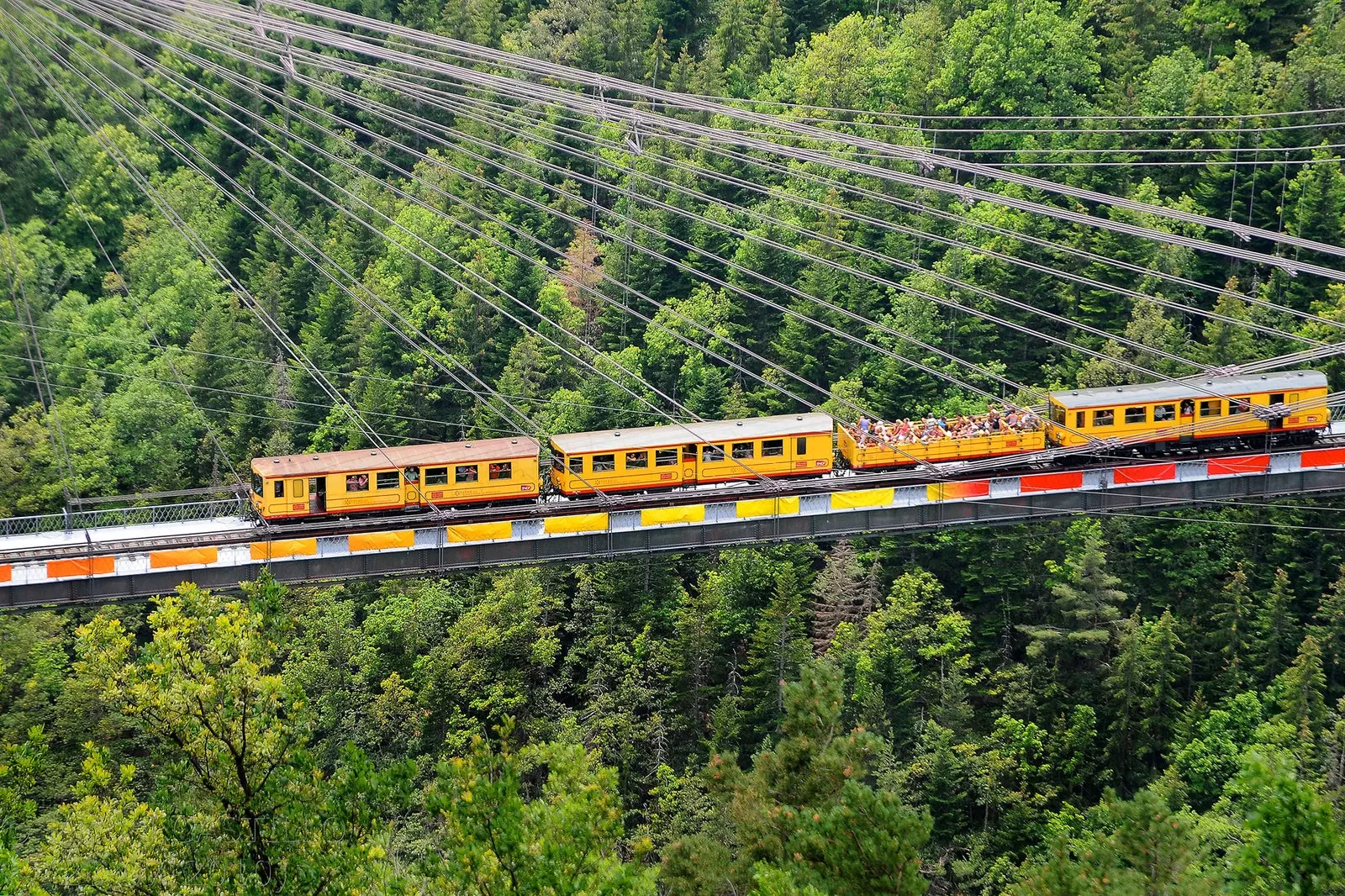Villefranche de Conflent It is a medieval town, whose elongated layout runs parallel to the Têt river, embedded in the bottom of its valley. Beyond its architectural beauty, it has an attractive cultural, commercial and gastronomic offer.
As in any other tourist place, only a few hundred people are registered in Villefranche. Intramuros, the lively life of this beautiful enclave runs mainly in a couple of streets and squares where the tourists hang out. It is part of the list of Les Plus Beaux Villages de France.

Streets of Villefranche de Conflent.
VAUBAN MILITARY ARCHITECTURE
Sebastién Le Prestre, Marquis de Vauban (1633-1707) is a key figure in the history of Villefranche de Conflent and numerous border towns. Architect and urban planner, during the reign of Louis XIV he was the general commissioner of the fortifications of the Kingdom. He designed and defensively reinforced castles and walls, forming a network of military architecture that can be visited in Perpignan, Bellegarde or Amelie-Les-Bains.
In Villefranche de Conflent his main work is the Fort Liberia, a fortress that continues to guard the town from above.
In 2007 the tercentenary of Vauban's death was celebrated and a year later, in 2008, two of his most outstanding works: Mont-Luis and Villefranche de Conflent became recognized as UNESCO World Heritage Sites.

The walls of Villefranche de Conflent are a great tourist attraction.
WALLS, PASSAGEWAYS AND FORTRESSES
Do walls make a town more beautiful? It usually happens like this. The defensive constructions of past centuries have lost their military meaning and acquire a new tourist value to walk and admire. The beacons become viewpoints and the walkways, places for walks.
In Villefranche de Conflent, one of the busiest tourist attractions is the underground passageway that connects the town with Fort Libéria. Considered one of the longest passageways in the world and often called "the one with 1000 steps" –although it only has 734–, it attracts the most energetic visitors, who dare to walk it upwards.

Walls of Villefranche de Conflent.
CRAFTS AND CATALAN GASTRONOMY
Inside the walled enclosure, which is accessed through huge wooden gates, the commercial and gastronomic offer is very suggestive: ceramic shops, second-hand bookstores, traditional textile bazaars, leather goods, wines, wooden toys or a shop selling handmade musical instruments delight tourists.
Wrought iron signs are the most common in these businesses among which we will not find, at least for now, the omnipresent international franchises.
Creperies, cafes and bistros with limited capacity they give the opportunity to taste the cuisine of the region, very similar to the one served on the other side of the Pyrenees: snails, xai or lamb, sausages and a whole list of suggestive desserts: me i killed, Catalan cream or the fougasses, also called Catalan cokes.
The chapter on wines is also noteworthy, since in the Eastern Pyrenees there are up to fourteen appellations of wine origin. The natural sweet wines, such as Banyuls, are the ones that present a recognized uniqueness and greater recognition in the rest of the country.

Le train jaune.
LE TRAIN JAUNE, THE YELLOW TRAIN OF CERDANYA
Two facts make this tourist train endearing: It circulates at an average of 30km/h and to ride it at an intermediate station, they recommend making a fuss to the driver for it to stop.
Built at the beginning of the last century, part of Villefranche de Conflent to Latour de Carol through the valleys of the Têt and Eyne rivers next to the Canigó Massif and passing through the highest train station in France, Bòlquere (1593 masl).
It also rattles when driving over the only French suspended viaduct, the Gisclard Bridge. A panoramic route of 63 kilometers for which they are used approximately in three hours. Quite a claim for the traveler who wants to slow down seeing the beautiful landscape of the Pyrenees Orientales.
